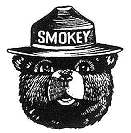United States Department of Agriculture, Forest Service, National Agroforestry Center

United States Department of Agriculture, Forest Service / University of Nebraska-Lincoln: Faculty Publications
Document Type
Article
Date of this Version
1982
Abstract
The riparian environment has become a key consideration in the planning and management of the public lands. This highly productive habitat receives many uses, some of which conflict with one another. Because there are conflicts that need immediate attention, range and fishery managers are making complicated, hurried decisions, often without the benefit of adequate knowledge or experience. In addition, interpretations emerging from riparian studies are often confusing and contradictory, inhibiting the manager's decision-making abilities.
Leopold (1974) stated that fish and wildlife habitat in western rangeland has experienced and is experiencing a steady deterioration under livestock grazing. The same year, Heady et al. (1974) stated that livestock grazing is being managed and integrated with other uses of federal lands and that there is no evidence that well-managed grazing of domestic livestock is incompatible with a high quality environment. Behnke and Zam (1976), on the other hand, reported that degradation of streambanks by livestock is one of the principal factors contributing to the decline of native trout in the West. Two years later, Hayes (1978) concluded that, during spring runoff, streambank degradation occurred more often and to a greater extent along ungrazed streambanks than along grazed streambanks. Busby (i979) stated that range conditions today are far better than the denuded, deteriorated rangelands that existed in the early 1900s. A year later, Platts (1979) agreed with this interpretation, but pointed out that the improvement was based mainly on data collected from drier portions of the rangeland and did not take into account the still deteriorated condition of riparian areas. Kimbal and Savage (1977) reported that proper grazing management will restore degraded riparian-stream habitats, and Duff (1977), a year later, stated that trout numbers increased dramatically and the condition of the riparian habitat immediately improved when grazing was eliminated. Holechek (1981) in a recent issue of the Journal of Range Management went even further. He stated that livestock grazing controlled by the use of scientific principles is compatible with other public rangeland resources, and may be used for the enhancement of these resources.


Comments
Published in TRANSACTIONS OF THE FORTY-SEVENTH NORTH AMERICAN WILDLIFE AND NATURAL RESOURCES CONFERENCE, ed. Kenneth Sabol (Washington, DC, 1982).